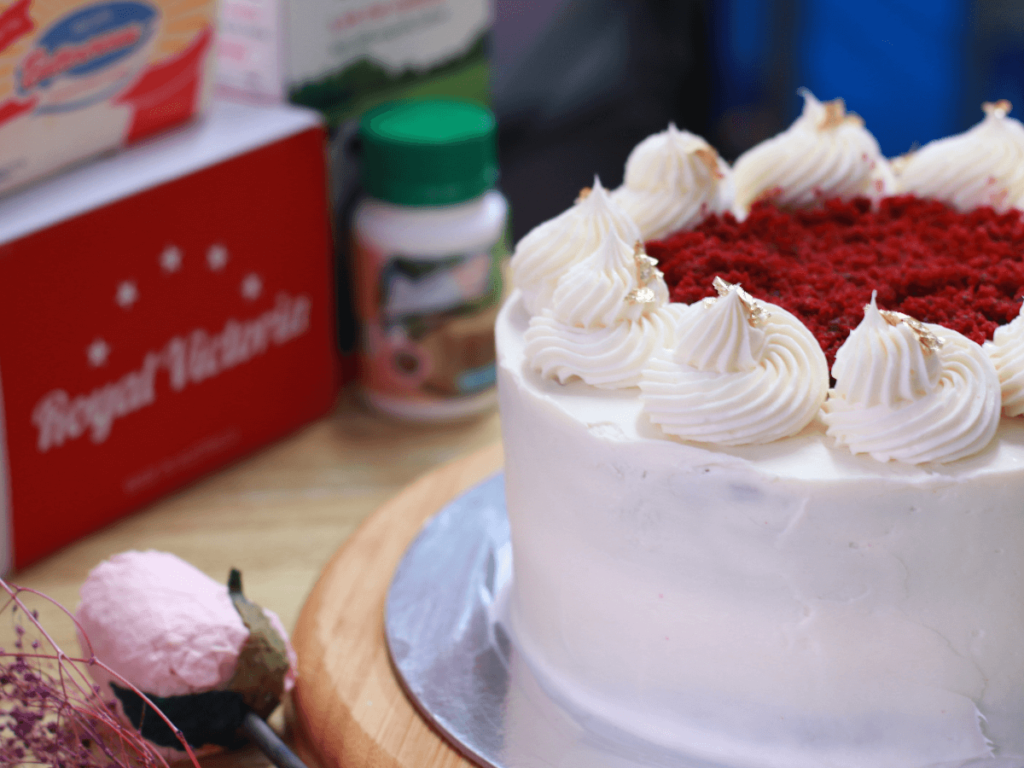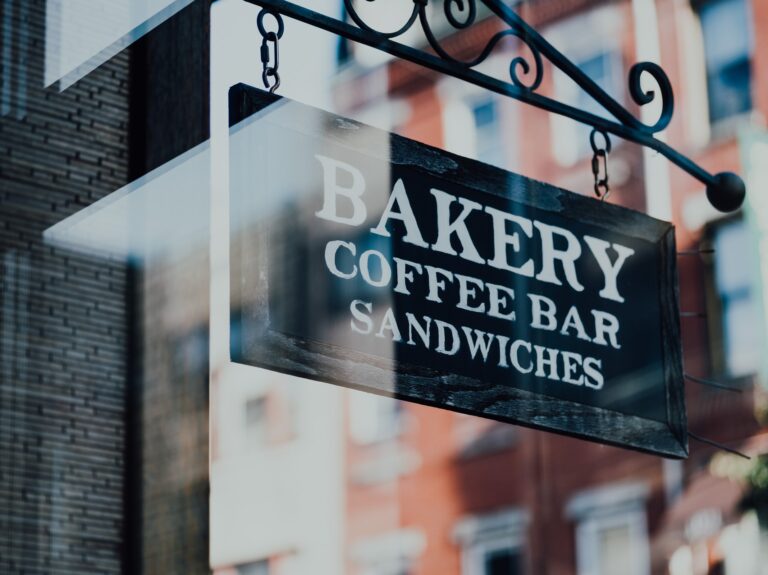History of Baking: What You Need to Know
From Spanish bread to apple pie, baking brought treats that everyone’s taste buds love. But how did baking come about? What’s the history of baking?
If these questions live in your mind rent-free, we got your back. In this post, we’ll talk about the history of baking.
What is Baking?

Baking refers to a form of cooking that involves prolonged heating. Bakers usually use flour and eggs to bake. However, you can replace these baking ingredients with gluten-free alternatives.
In addition, baking involves an oven. However, you can use other cooking methods to make treats without an oven. These methods include steaming and deep-frying.
When people think of baking, bread usually comes to mind. But baking doesn’t just equate to bread. Other popular baked goods include cookies, cakes, muffins, and cupcakes.
The History of Baking

Baking features a long history that curbed the hunger of countless people. From ancient civilizations to modern ventures, baking played a significant role in food history.
So, the next time you make a baked masterpiece or look at baking oven prices, think about the history of baking.
Ancient Egypt (2,600 BC)
Did you know? Archaeologists discovered the oldest ovens in Croatia in 2014. According to carbon dating, these ovens are about 6,500 years old.
Data also suggests that Egyptians pioneered baking. They’re the first recorded civilization that used yeast in making bread. According to research, they started baking in 2,600 BC.
Research also shows that ancient Egyptians invented and shaped baking in its early stages. According to experts, they learned the skill from the Babylonians. In particular, Egyptians baked bread using yeast, which they also used for brewing beer.
Moreover, archaeologists found bread pieces in old Egyptian tombs. According to them, friends and family kept them, so the person could bring something to eat in the afterlife.
This ritual shows our ancestors’ care and concern for their loved ones.
Ancient Rome (300 BC to 1 AD)
Baking also became a highly regarded profession during the Roman Empire (around 300 BC). According to research, baking professionals learned baking from the Greeks.
Greeks taught them to harvest wild grass grains, soak them in water, mash them, and mix them with spices. The mixture resulted in a paste.
Next, they cook the paste on a flat, hot rock. This led to a bread-like substance.
Around 168 BC, Romans established the Roman Empire’s Baker’s Guild. Also known as Pistorum, the guild acknowledged bread bakers as skilled artisans.
In addition, people at that time held baking in such high regard. As a result, they had an annual festival that honored Fornax, the oven goddess.
Around 1 AD, over 300 pastry chefs existed in Rome. They baked many kinds of stuff, including bread and sweet cakes. The bakers also made sacrificial cakes, pretzels, pastries, and more.
Interestingly, the Romans used an oven with a chimney on it. The people used grain mills, which allowed them to grind grain into flour.
Middle Ages (5th to 15th Century)
During the Medieval period, people did not usually use ovens at home. Only those who could afford stoves fueled by burning wood made bread. Thus, making high-quality bread became an achievement.
However, baking further divided people based on their status. The rich ate delicious bread and meat pies, while the poor only had black bread.
Because of baking’s popularity in Rome, it became famous throughout Europe and eventually came to Asia.
15th to 17th Century
The birth of saffron and other expensive spices helped baking reach new heights in Britain during the 15th century. At this point, sweetened dough buns, gingerbread, and mincemeat pies entered the baking scene.
Then, economic growth and globalization during the 16th and 17th centuries let baking flourish more.
During this period, bakers introduced decadent treats with butter, cream, and raisins. Baking also became more accessible to the average person during this time. Hence, families began baking biscuits and cakes together.
In the late 17th century, sugar prices decreased. Then, refined flour became easily accessible. As a result, desserts came into the spotlight, including pies, pastries, and iced cakes.
Pastry chefs in London also started selling their baked goods in carts. Thanks to the fantastic baked goods, they progressed to convenient shops on wheels. Shortly after, bakers began delivering baked goods to people’s households.
18th to 19th Century
The Industrial Revolution marked a turning point for baking in the average home. In particular, the evolution of technology —not just the availability of ingredients— made baking more popular.
In addition, the semi-closed oven and The Art of Cookery in 1747 gave budding pastry chefs the tools and ideas they needed to try many recipes.
Moreover, as more women worked in the 19th century, they cut their time in the kitchen. As a result, convenience food became more popular.
During this period, baking powder transformed the dense, yeast-based cakes of centuries past. Thanks to the wonderful baking powder, we now enjoy the light and fluffy treats.
Modern Baking
Today, baking plays a crucial role in our lives. From homemade treats to commercial deliciousness, baking allows us to enjoy baked products like never before.
Whether you love baking from scratch or buying premade products, baking has become vital to your life. The art and science of baking take on countless forms, from traditional cookies to frozen pizza.
Plus, modern baking lets bakers do their craft more effectively, with less energy and time.
Modern baking also introduced us to digital ovens and several baking tools and equipment, making our food tastier.
Baking Recipes
Wondering about what you should bake first? Let’s take a look at these easy, beginner-friendly recipes that’ll blow your mind:
Banana Muffins

Do you want a healthy, delicious, and quick snack for your friends and family? Check out this banana muffin recipe!
Get your kids excited about breakfast with this freshly baked treat. Your customers will also love you for introducing this to your business’ menu. Trust us; this tried and tested recipe will take your muffin game to the next level.
Plus, these tasty treats will be on your table in less than an hour. How cool is that?
In particular, this recipe makes 12 to 18 muffins depending on how big you make them. Additionally, these banana muffins store well. So, if you have leftovers or don’t want to eat them right away, just put them in an airtight container.
Then, store them in the fridge until ready. Just thaw them out before eating.
Red Velvet Cake

Red velvet cake is a classic dessert that everyone loves. This easy recipe teaches you how to make a delicious red velvet cake. We also included a video for you to follow to make things easier.
Additionally, this recipe is easy enough for any home cook. And did we say how delicious this cake is?
Plus, its festive, rich color and cream cheese frosting make us drool so bad!
Known for its moist, fluffy texture, this cake uses ChiffonAide Cake oil instead of butter.
Vegetable oil produces a more moist and tender cake, so bakers often use it in quick bread and muffins. In addition to oil, red velvet also contains buttermilk. Buttermilk helps to keep it moist and gives it a slightly tangy flavor.
So, what are you waiting for? Grab your mixer and try this recipe now!
Baked Churros

Don’t you love that melt-in-your-mouth sensation paired with the chocolate goodness? If you do, you’re in for a treat.
Due to our mission of bringing easy-to-follow recipes to the world, we give you this baked churros recipe.
Churros are famous in Mexico and Spain. Lately, they’ve been making rounds in the Philippine food arena.
Made with choux dough fried in oil and covered with cinnamon sugar, churros will make your mouth and tummy rejoice. Churros’ crispy outside and chewy inside burst with goodness.
However, many want a healthier alternative to the usually deep-fried churros, so here you go. Instead of deep frying, you’ll have to bake these churros.
Egg Pie

Use this egg pie recipe to craft a rich, creamy, and heavenly dessert. As one of the most beloved desserts in the Philippines, we have to do this justice.
With its nice buttery crust and creamy custard filling, you don’t have to wonder why. There’s just something heavenly with how a rich, creamy filling blends so well with a flaky crust.
Are you craving egg pie already? Don’t worry because we’re here to satisfy that craving.
This simple egg pie recipe lets you make a mouth-watering egg pie in a little over an hour. So, how many pieces can you serve from this recipe? You can serve up to 24 people, making it a fantastic dessert for gatherings.
Fruit Cake

Are you looking for an easy fruit cake recipe this Christmas? This easy fruit cake recipe is perfect for your next family gathering or Christmas party.
We know that sometimes finding the right recipe seems like a daunting task. That’s why we did all the work for you.
This fruit cake is so delicious you’ll bake it year after year. Plus, it’s so easy to whip up. You just need simple ingredients and about an hour and a half.
Trust us when we say they won’t believe how delicious this fruitcake tastes until they try it. So what are you waiting for? Print or bookmark this recipe now before someone else beats you to it!
Frequently Asked Questions
Baking and its history started way back in Ancient Egypt in 2,600 BC. It’s one of the oldest cooking methods. Egyptians baked bread using yeast, which they also used for brewing beer. Baking also became a highly regarded profession during the Roman Empire in 300 BC. Eventually, baking adapted to modern times, where we now enjoy it.
Egyptians first discovered baking. They’re the first recorded civilization that used yeast in making bread. According to research, they started baking in 2,600 BC.
Humans started baking bread about 10,000 years ago, based on archaeological data. Baking became a crucial part of our evolution. Ancient humans gave up their nomadic lifestyle, settled, and grew cereals, which they baked.
People started baking because flour and sugar became more accessible. Ovens also became more popular in homes, so people started baking biscuits and cookies with their families.
Here’s the full meaning of baking: the act of making cakes, cookies, bread, and others by cooking them in an oven.
The Aboriginal people are the world’s first bakers. Archaeologists discovered grinding stones over 30,000 years old in Australia.
The ancient Egyptians first baked a cake. The Egyptians were the first civilization to have baking skills. During ancient times, cakes looked more bread-like and were sweetened with honey. The Greeks first baked cheesecakes, while the Romans baked fruit cakes with nuts, raisins, and fruits.
Conclusion
Knowing the history of baking makes you appreciate baking more. From ancient to modern times, baking has filled out tummies with yummy treats.
Consider this: where will we be without baking? What will birthdays be like without cakes? How about Christmas without gingerbread houses?
Those questions might be rhetorical, but these occasions will never be the same without baked stuff.
So, the next time you bake a cake, take time to appreciate what our ancestors did to bring baking this far. Happy baking!
About HICAPS
Over the years, HICAPS has helped bakers and businesses make delicious products by offering ingredients like ChiffonAide Cake Oil, Magic Whizk Whipping Cream, Red Velvet Flavor Emulco, and Instabake Brownie Mix.
HICAPS also provides tools and resources to valued partners, such as the free “How to Increase Your Sales Amidst the Pandemic” E-book and free dealer locator that helps look for baking ingredients near me.
Want more free tips and tutorials? Follow us on Facebook at Hicaps Mktg. Corp. and on YouTube at HicapsTV.
Want to be one of our valued partners? Fill out this form out. Looking forward to talking to you soon!







